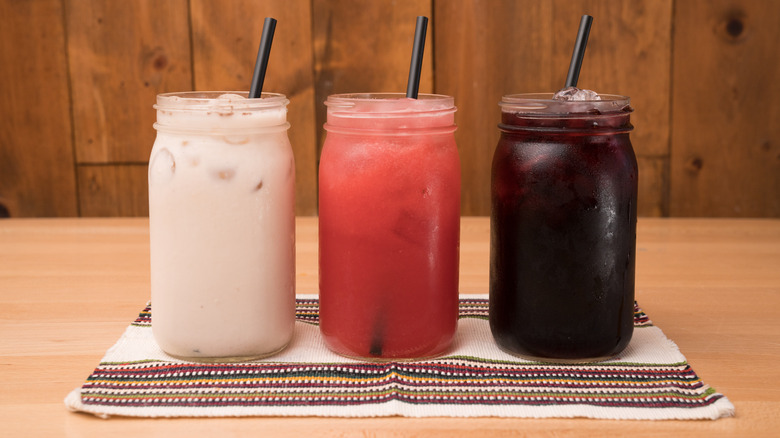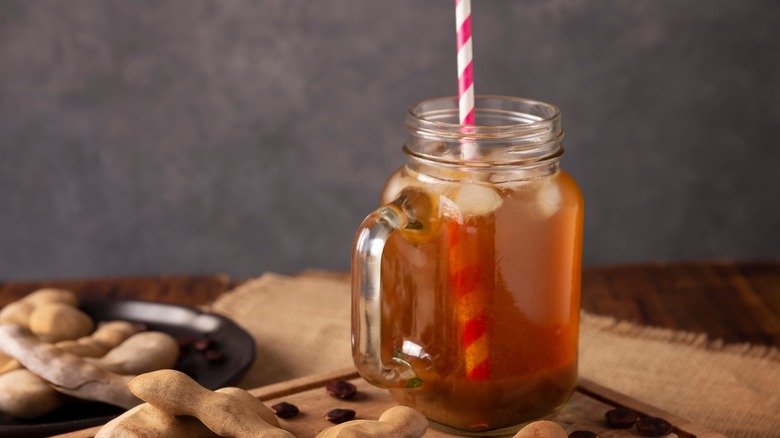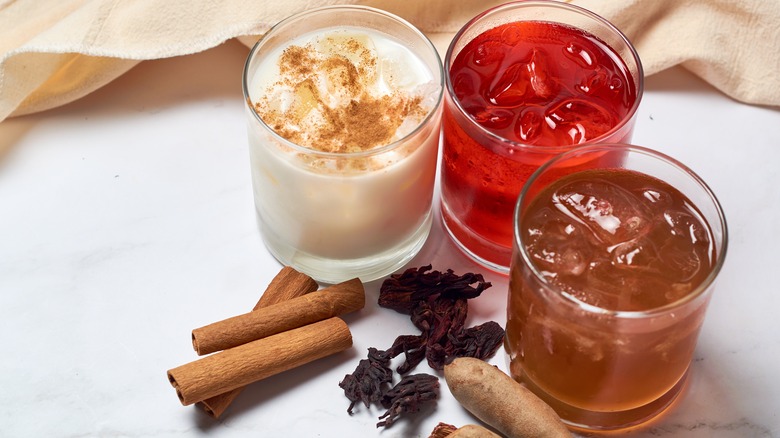The Origin Of Mexico's Iconic Agua Fresca Drink
Perhaps no drink exemplifies Mexican cuisine more than agua fresca. It's difficult to classify agua fresca under any category of drink; many of them are technically sort-of like juice — but really, they belong in a category of their own. What they all share in common is that they're non-alcoholic beverages with sugar (natural or added) and water mixed with ... something else — and that something else varies. They're refreshing drinks, reflected in the meaning of their name: agua fresca translate to "fresh waters."
They're also a drink with a long history dating back centuries. We can't say with absolute certainty when they were invented, but popular legend states that they date from the pre-Colombian era of the 15th century, when the Aztec Empire ruled over much of the territory that is Mexico today. The story goes that the drink was first created by Aztecs who gathered their ingredients (fresh fruit at first, with other versions eventually making their appearance) from along the waterways of the capital of Tenochtitlan (modern-day Mexico City) and mashed the fruit with water. They then either sold the result to customers or just drank it for themselves.
Agua fresca's origin is pretty easy to believe
There's some discrepancy here; sources differ on whether the original creators of agua fresca were farmers (possibly bringing their own produce to market) or just anybody who happened to be cruising along Tenochtitlan's canals. There seems to be some agreement that they got ice from the nearby dormant volcanoes of Iztaccíhuatl and Popocatépetl, though — an important part of the story, since agua fresca is usually served cold. Over time, they became a popular drink sold at street markets and made at home, especially in regions where sugarcane was grown. Today they're an indelible part of Mexican (and Central American) culture and cuisine.
It's worth noting that this origin story is a lot less fantastical than many food or beverage origin stories; there's no hard-to-believe tale like, say, Nashville hot chicken's surprising origin story about a wife seeking revenge on a philandering husband. Instead, there's just creative people taking produce and mixing it together in a drink, then selling it — a reasonable, simple history. We may not have concrete proof that this is where agua fresca came from, but there's not much reason to doubt it, either.
There are all kinds of agua fresca
If you're looking for a lesson in agua frescas, meanwhile, there are all kinds of flavors for all sorts of tastes. Many agua frescas are still fruit or produce-based like the original versions, from the tropical flavors of a pineapple, grapefruit, and cilantro agua fresca to the light taste of a cucumber-celery agua fresca. But there are plenty of other well-known varieties, too. Agua de jamaica is sort of like iced tea made with hibiscus petals, making it a refreshing floral drink.
Possibly the most internationally-renowned agua fresca, horchata, is made from grains (most commonly rice), nuts, or seeds that have been soaked, blended, and strained; though all horchata has a milky consistency, only some of it actually contains dairy. These aren't the only kinds available; agua fresca is a wide category of drinks built from a variety of possible bases. The one thing they all share, though, is that they're designed to be especially refreshing on a hot day — and that's exactly what they are.


